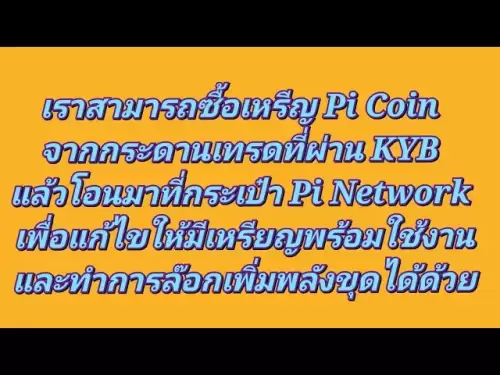 |
|
 |
|
 |
|
 |
|
 |
|
 |
|
 |
|
 |
|
 |
|
 |
|
 |
|
 |
|
 |
|
 |
|
 |
|
Cryptocurrency News Articles
Ethereum (ETH) co-founder Vitalik Buterin is calling for a major simplification of the protocol
May 05, 2025 at 08:01 pm
aiming to reduce its complexity to a level closer to Bitcoin's while preserving its unique strengths in programmability and scalability.

Ethereum co-founder Vitalik Buterin has called for a major simplification of the protocol, aiming to reduce its complexity to a level closer to Bitcoin’s while preserving its unique strengths in programmability and scalability.
In a blog post published Saturday, Buterin argued that Ethereum’s growing technical sprawl — from its consensus mechanisms to its virtual machine — has made it harder to maintain, audit, and onboard new developers.
He proposed a multi-year strategy to shrink Ethereum’s “consensus-critical” codebase and reduce the risk that the protocol becomes too technocratic and fragile.
“Even a smart high school student is capable of fully wrapping their head around and understanding the Bitcoin protocol. A programmer can write a client as a hobby project,” Buterin wrote.
High complexity
Ethereum’s base layer has become increasingly complex due to feature additions, new consensus designs, and legacy code requirements. While this has enabled powerful use cases like smart contracts and zero-knowledge proofs, it has also increased the risk of bugs, made protocol upgrades harder, and raised the barrier for new developers.
In contrast, bitcoin’s core protocol remains relatively unchanged and minimal: blocks, transactions, proof-of-work, and coin outputs.
Area of simplification proposed by Buterin includes an overhaul of Ethereum’s current consensus layer (the “beacon chain”), which involves complex mechanics like epochs, slot shuffling, and sync committees.
Another is patching the Ethereum Virtual Machine (EVM) incrementally, but eventually replacing it entirely with a simpler virtual machine like RISC-V. This lightweight, open standard could bring performance boosts for zero-knowledge provers and drastically reduce code complexity.
However, one of the main challenges is preserving backwards compatibility with existing Ethereum applications.
Buterin outlined a phased approach where the current EVM and the new VM could run side-by-side, and legacy functionality could be moved into “non-consensus” layers.
Disclaimer:info@kdj.com
The information provided is not trading advice. kdj.com does not assume any responsibility for any investments made based on the information provided in this article. Cryptocurrencies are highly volatile and it is highly recommended that you invest with caution after thorough research!
If you believe that the content used on this website infringes your copyright, please contact us immediately (info@kdj.com) and we will delete it promptly.





























































